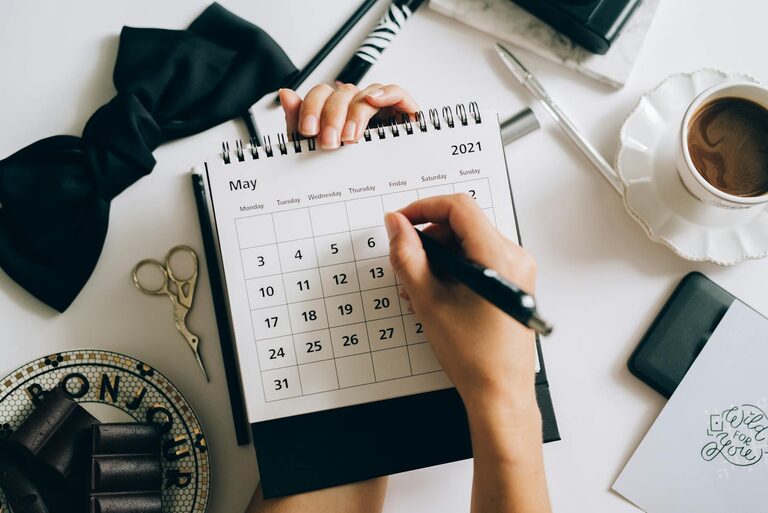Creating a weekly reset routine can be a game changer for your productivity and overall well-being. It offers a dedicated time to pause, reflect, and prepare for the days ahead. If you find yourself feeling overwhelmed or stuck in a cycle of busy days without much progress, a reset routine might just be what you need.
In this post, we’ll explore how to design a weekly reset routine that fits your lifestyle, helps you unwind, and sets you up for success. Whether you want to organize your schedule, declutter your space, or recharge mentally, these steps will guide you in building a refreshing weekly habit.
What is a Weekly Reset Routine?
A weekly reset routine is a set of intentional actions performed once a week aimed at refreshing your mind, body, environment, and plans. Unlike daily routines, which focus on regular habits, a weekly reset is broader and gives you a chance to pause deeply, reflect on your goals, tidy spaces, and plan ahead.
Benefits of a Weekly Reset Routine
– Improved focus: Clearing mental and physical clutter helps you concentrate better.
– Enhanced productivity: Planning ahead prevents last-minute stress.
– Reduced overwhelm: Regular check-ins can keep anxiety in check.
– Better work-life balance: Prioritizing self-care and organization promotes well-being.
– Sense of accomplishment: Ending the week with a reset builds positive momentum.
Step 1: Choose the Right Day and Time
Selecting a consistent day and time for your reset routine is the foundation of success.
Tips for choosing your reset day:
– Pick a day with fewer commitments, such as Sunday or Friday evening.
– Make sure you have at least 30-60 minutes free without interruptions.
– Consider your energy levels; some prefer mornings, others evenings.
Consistency helps turn your reset routine into a habit, so try to stick with the same day each week.
Step 2: Define Your Goals for the Reset
What do you want to achieve with your weekly reset? Your goals will shape the activities you include.
Common goals include:
– Organizing your living or work space
– Reviewing and updating your calendar or to-do lists
– Reflecting on personal and professional progress
– Planning healthy meals and workouts
– Practicing relaxation or mindfulness
Write down your goals to keep your routine focused.
Step 3: Create Your Reset Checklist
Having a checklist makes your routine manageable and ensures nothing slips through the cracks. Below is a sample checklist to customize:
Sample Weekly Reset Checklist
– Tidy physical space: Clear desk, do laundry, organize closet
– Digital declutter: Delete unnecessary emails, organize files
– Plan upcoming week: Review calendar, set priority tasks
– Self-care: Take a bath, meditate, enjoy a hobby
– Reflect: Journal about wins and challenges of the past week
– Meal prep: Plan and prep meals or grocery list
– Set intentions: Decide on one or two key goals for the week
Adjust this list based on what’s important for you.
Step 4: Set Up Your Environment
A calm environment can make your reset routine more enjoyable and effective.
– Find a quiet space free from distractions.
– Gather any tools you need like notebooks, planners, or devices.
– Light a candle or play soft music if it helps you relax.
Creating a ritual around your reset can encourage consistency.
Step 5: Keep It Flexible and Adapt
Your routine should serve you, not feel like a chore.
– If an activity doesn’t feel helpful, swap it out or skip it.
– Some weeks may be busier; scale back your routine when necessary.
– Over time, experiment with new habits or goals to keep it fresh.
The key is to maintain the core purpose of resetting and recharging.
Step 6: Make It Enjoyable
Turn your weekly reset into a time you look forward to.
– Combine it with a favorite treat like tea or a snack.
– Invite family or friends to join for added motivation.
– Celebrate small wins by acknowledging your progress.
A positive association will help you stay committed.
Example Weekly Reset Routine
Here’s an example of how a 45-minute reset might look:
- **5 minutes:** Light tidying of work area
- **10 minutes:** Digital cleanup (emails, files)
- **10 minutes:** Review calendar and update to-dos
- **10 minutes:** Journaling – what worked well, what to improve
- **10 minutes:** Self-care activity (stretching, meditation)
Feel free to personalize timing and activities.
Tips for Staying Consistent
– Set a reminder on your phone or calendar.
– Prepare the day before by setting out materials.
– Track your routine in a habit tracker app or journal.
– Reflect monthly on the benefits you’re noticing.
Consistency builds momentum and strengthens this beneficial habit.
Final Thoughts
Designing a weekly reset routine is a wonderful way to maintain balance, increase productivity, and nurture your well-being. By dedicating regular time to reset, you gain greater control over your schedule and environment while supporting mental clarity.
Start simple, adjust as you learn what works best, and enjoy the sense of calm and readiness that comes with a well-crafted weekly reset routine!
—
Have you tried a weekly reset routine before? Share your favorite tips or activities in the comments below!

